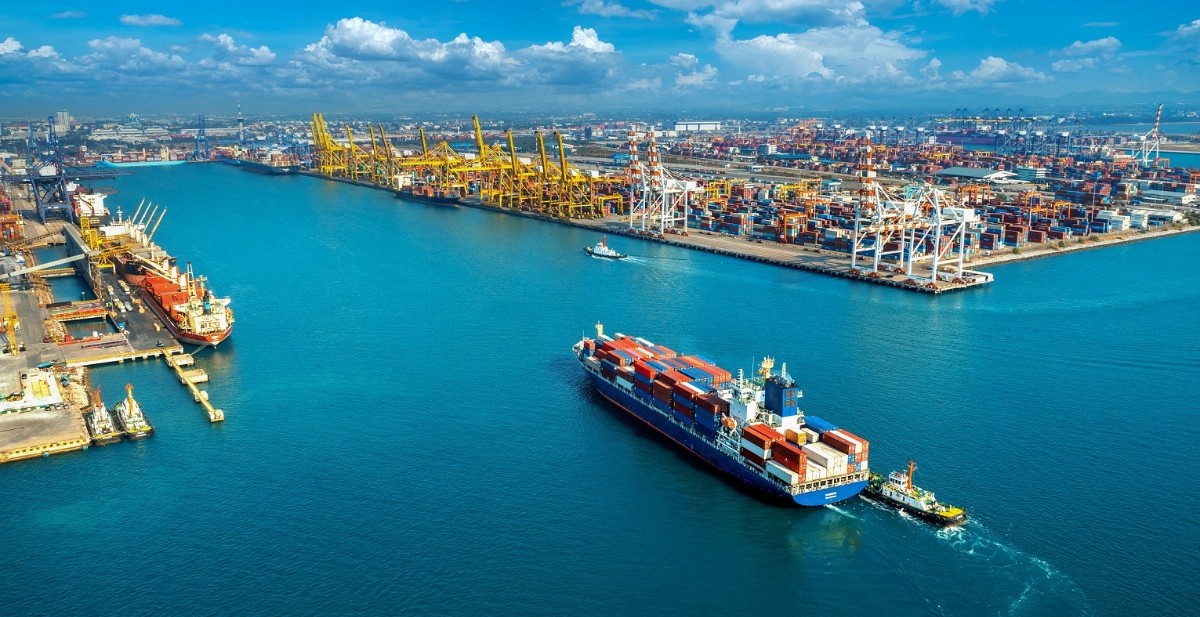Robust trade diversity bucks headlines

But supply chain risks centre on a rise in sourcing concentrations
By Carly Fields
Elimination of risk in modern day supply chains is an unrealistic goal; the best supply chain professionals can hope for is to effectively navigate it to ensure resilience, according to a report from the OECD.
Recent years have seen a surge in external pressures on the global supply chain: from the disruptions of the Covid-19 pandemic and Russia's war against Ukraine to escalating geopolitical tensions and instances of economic coercion.
The latest OECD Supply Chain Resilience Review sets out a balanced approach to navigating supply chain risks without undermining the upside benefits that come with expanding global trade.
Drawing on the outputs of the OECD Trade Committee, the report finds that while concerns about over-reliance on specific trading partners have gained traction, "most trade flows remain relatively diversified”. Indeed, approximately 70% of exported products are considered "relatively well diversified”, with only about 30% exhibiting high levels of concentration. This suggests that despite the headlines, a significant portion of international markets still benefits from robust competition.
However, a closer look at the data reveals a concerning trend: import concentration is on the rise.
Countries are increasingly sourcing products from a narrower range of suppliers than is globally available.
The report quantifies this shift, noting "50% more cases where countries import products from fewer than half of the suppliers than are globally possible" in concentrated markets when comparing the early 2020s to the late 1990s.
This "significant concentration”, said the OECD, while potentially reflecting economic and geographic factors, undeniably presents a vulnerability to shocks. This trend is predominantly driven by non-OECD countries, with OECD members maintaining a relatively stable level of significant import concentration.
China’s rise to fame
A significant factor in this evolving landscape is China's increasing prominence. The report indicates that China's contribution to countries' "significant import concentration has increased from 5% to 30% over the past 25 years”, while the combined share of the US, Germany, and Japan has declined. This underscores China's growing role as a key, and sometimes concentrated, supplier in global value chains.
Yet, it's a two-way street; the report also emphasises that "China has a large share of significantly concentrated trade with the OECD and EU”, particularly in advanced manufacturing sectors like motor vehicles and pharmaceuticals, highlighting a mutual interdependency.
The impact of disruptions, whether from natural disasters or geopolitical events, is a central theme.
The OECD's modelling reveals that economies with deep vertical links to major foreign economies are more susceptible to international supply chain shocks.
Canada, France, Germany, and the United Kingdom are identified as particularly exposed. Conversely, the US, Brazil, and China demonstrate less exposure due to their greater reliance on domestic markets.
“In the current context, governments should work together to tackle uncertainty and pursue reforms to foster growth and jobs. Trade agreements to resolve existing tensions and lower or eliminate barriers should be accompanied by more efforts to enhance multilateral cooperation,” said Álvaro Pereira OECD chief economist.
One of the report’s most compelling findings challenges the notion that "re-localising" supply chains offers a panacea for resilience. The OECD's modelling demonstrates that such a strategy, which could involve higher import tariffs and subsidies to domestic production, "could decrease global trade by more than 18% and global real GDP by more than 5%”.
Crucially, this re-localisation "was no more resilient to shocks – in terms of the stability of GDP, production and consumption... than the interconnected regime”, said the report. In fact, for over half of the economies analysed, GDP stability actually decreased. This, said the OECD, is a reminder that "openness and the geographical diversification of input sources and output destinations in global value chains can offer important options for adjusting to disruptions and mitigating exposure to shocks”.
“Responses to concerns about security of supply and market concentration, as well as the long-term transformation of trade flows, risk creating undesirable distortions,” noted OECD secretary-general Mathias Cormann.
Digital and sustainability angles
Beyond traditional trade dynamics, the digital transformation and the global push for environmental sustainability are also reshaping supply chains. Digital technologies, from robotics to AI-powered predictive analytics, offer immense opportunities for enhanced efficiency, visibility, and responsiveness. However, they also introduce new vulnerabilities, such as increased susceptibility to cyberattacks and reliance on a limited number of global digital service providers.
The report advocates for "balanced approaches to data governance [that] can deliver important gains”, noting that fragmented approaches can lead to significant reductions in GDP and exports.
The drive for environmental sustainability also presents both opportunities and pressures.
Trade in environmental goods, from electric accumulators to air pollution control devices, is growing, with low-income countries more than doubling their exports in this sector.
However, the supply chains for these goods are often reliant on critical raw materials whose extraction and processing are highly concentrated geographically. The report highlights a "more than five-fold increase" in export restrictions on industrial raw materials between 2009 and 2022, posing a significant risk to the green transition.
Furthermore, the increasing adoption of supply chain sustainability laws, particularly those related to worker rights, now covers "close to half of global production”. While laudable in their intent, these regulations can impose significant transaction costs, potentially impacting developing countries and small and medium enterprises (SMEs) disproportionately.